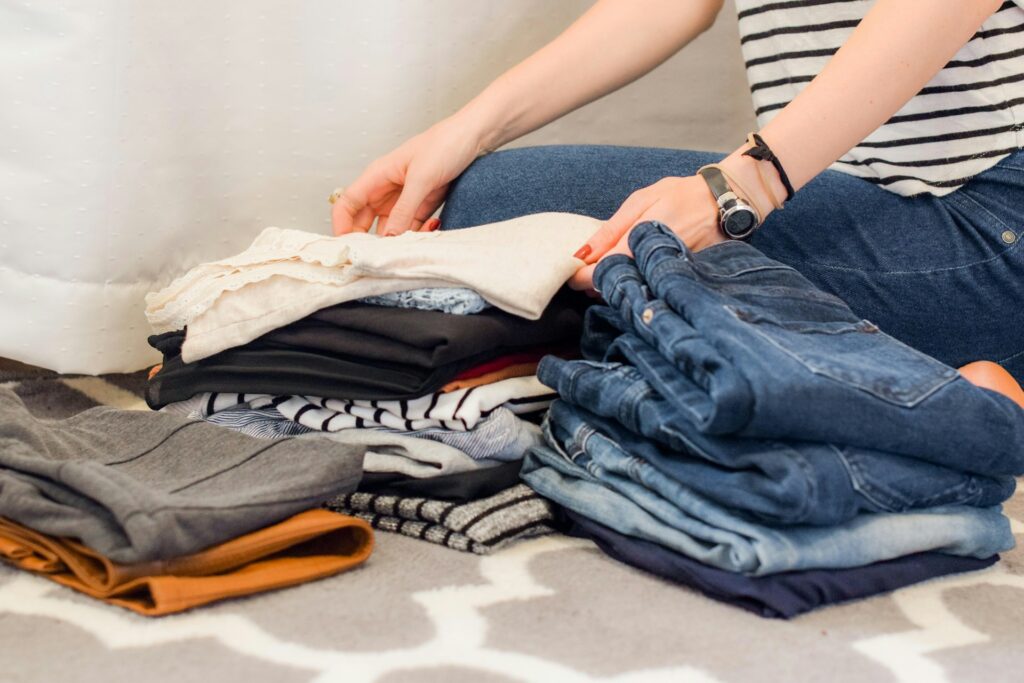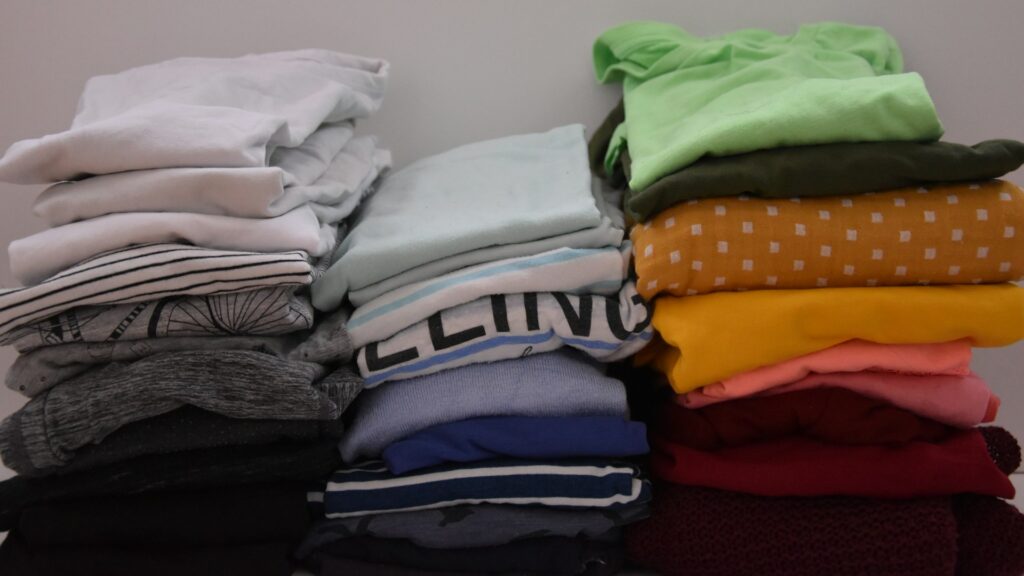Folding laundry seems like a simple task, but the way you fold clothes affects how much space you have in your closet and drawers. Most people follow old habits without realizing that small changes in folding methods can free up room, keep clothes in better shape, and make storage easier to manage. By rethinking how laundry is folded, you can maximize your storage space and keep your wardrobe looking neater.
Why Traditional Folding Takes Up More Space
The classic way of folding shirts and pants into large squares or rectangles often creates thick stacks that take up unnecessary space. These stacks are hard to manage because pulling one item out usually topples the rest. The traditional method also makes it difficult to see what you own, which leads to clothes being forgotten at the bottom of the pile. Folding in slimmer, more compact ways reduces bulk and makes better use of vertical space.
The Benefits of Vertical Folding
Folding clothes to stand upright, instead of lying flat, creates more visibility and space. This method lets you store clothes in drawers or bins like files in a cabinet. Instead of digging through a pile, you can see every shirt or pair of pants at a glance. This reduces the time spent searching for outfits and prevents clothes from wrinkling under heavy stacks. Vertical folding also makes it easier to rotate items, so older pieces do not sit unused at the bottom of a pile.
How Rolling Clothes Saves Closet Space
Rolling clothes instead of folding them flat is another efficient technique. Rolling compresses fabric into tighter shapes, which means you can fit more into drawers, suitcases, or storage bins. This method works especially well for T-shirts, workout clothes, and pajamas. Rolled clothing stacks neatly side by side, making it easy to grab what you need without disturbing the rest. It also reduces creases because the fabric is evenly compressed rather than folded sharply.
Folding Jeans and Pants More Efficiently
Many people fold pants in bulky halves or quarters, which makes them thick and hard to stack. A slimmer approach is to fold jeans or trousers in thirds or roll them to save space. Folding along the seams creates a neater line and reduces bulk. When pants are folded compactly, they take up less space on shelves or in drawers, and it is easier to organize them by color or style.

Why Towels and Sheets Take Up More Room Than They Should
Large linens like towels and sheets often take up more space than necessary because they are folded into wide, uneven stacks. Folding towels into thirds lengthwise, then in half, creates a compact, uniform shape that stacks neatly. For sheets, folding tightly and storing them inside one of the pillowcases keeps the set together while saving space. This prevents messy piles and makes it easier to grab a complete set when needed.
The Problem with Overstuffed Closets
When closets are filled with bulky folded stacks, airflow is reduced, which can leave clothes smelling stale. Overstuffing also causes wrinkles that are hard to remove without ironing. By adopting slimmer folding methods, clothes stay fresher, and closets feel less cramped. Creating more space also means fewer clothes are crushed together, helping fabrics maintain their shape and texture over time.
Small Items Need Smarter Folding Too
Socks, underwear, and accessories are often thrown loosely into drawers, wasting valuable space. Rolling socks together into compact bundles or folding underwear into small rectangles helps maximize storage. Keeping these smaller items folded neatly prevents tangles and makes drawers easier to navigate. With smart folding, even the smallest pieces of clothing can be stored efficiently.
Why Folding Matters for Fabric Care
Improper folding not only wastes space but can also damage fabrics. Heavy piles put pressure on delicate fibers, stretching them out or creating permanent creases. By folding into compact, uniform shapes, fabrics experience less stress. Proper folding also reduces the need for constant ironing or steaming, saving both time and energy in the long run.

Using Organizers to Maximize Folding Techniques
Drawer dividers, baskets, and storage cubes complement better folding habits. Once clothes are folded into compact shapes, organizers keep everything in place and prevent piles from shifting. This setup helps maintain order, especially for items that are used daily. A combination of efficient folding and proper storage tools ensures that every inch of space is used effectively.
Fold Smarter, Save Space
Folding laundry may seem like a minor chore, but the way you do it affects both closet space and clothing care. Traditional methods often waste room and leave clothes wrinkled. By adopting techniques such as vertical folding, rolling, and tighter folding for bulky items, you can transform your storage. Smarter folding not only saves space but also keeps clothes in better condition, making your closet more organized and efficient.
Disclaimer: This article was created with AI assistance and edited by a human for accuracy and clarity.

